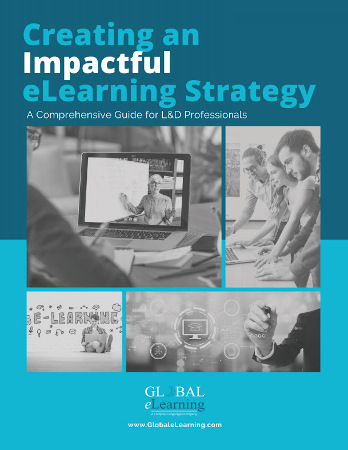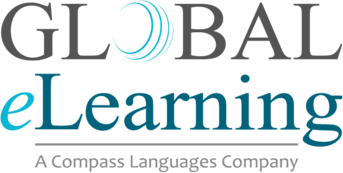eLearning Localization
Trusted Worldwide for eLearning Localization
eLearning has become a vital part of society. Our ability to learn about new topics and skills from the comfort of our own homes is exciting for job seekers and businesses alike. At Global eLearning, we’re committed to helping eLearning organizations market their courses in other nations. While the language barrier may seem daunting, our experienced team knows all the steps to adapting your course for a foreign audience. Whether you’re most concerned about eLearning translation or ensuring you stay in line with the culture, we’re here for you. Learn more about eLearning localization and the importance of choosing a company that does it all.
What Is eLearning Localization?
Localization, by itself, is the process of adapting a piece of content to a different language and culture. Now, all your materials might be available in English and geared toward an American audience. However, if you’d like to market to Russian speakers or members of a South Asian culture, you’ll need to make some adjustments to your content to ensure those users feel comfortable. eLearning localization is applying this process to online learning materials. You can optimize your content for other widely-spoken languages across the world tweak your website for members of a culture different from your own.

Why Localization is Vital for Your Company
In an ever-globalizing world, English is no longer the sole language of commerce. Many business giants are located in China, where the majority of people may not understand American English. What’s more, Spanish, Portuguese, and German are increasingly spoken in business contexts. Individuals from across the world may benefit from your eLearning tools. But first, they must be available in the appropriate language. Localizing your content to other languages and cultures not only makes you more competitive in the business world, but it also ensures your product is available to legions of new consumers. Using Global eLearning’s services, you can expand to nearly any market you wish. Elements of your online content that can be localized include:
- Text to Speech
- Graphics and Photos
- Audio and Video
- Dates, Times, Currency
- Navigation Elements
- Humor and Local Expressions
Translating eLearning Content
While translation isn’t the only aspect of eLearning localization, it is a crucial component for success in most markets. In brief, translation involves converting original content into a target language, but it requires much more than just that. Sometimes, you’ll want to translate humor or local expressions into another language. You’ll need to avoid using words with double meanings or negative connotations. In addition to linguistic issues, you’ll also need to account for formatting changes in other languages. For example, Arabic is written from right to left, and Spanish-speaking countries format numbers and dates differently. In both of these situations, you’ll need to consider using appropriate fonts, text boxes, and more. Because translating is a lengthy and challenging job, you’ll want a professional team on your side to be sure you have all your bases covered.
Consider Adapting or Adjusting Images
A picture may be worth a thousand words, but that doesn’t mean it will translate into any language or culture. Before you open your eLearning course to learners across the world, you’ll want to make sure any images and graphics you use are adjusted to the appropriate culture. Symbols can mean different things as you cross the border into another country, and you’ll want to account for that. Failing to adjust symbols, graphics, and images can cause misunderstanding, and at worse, offense. You want to ensure every learner feels at home when using your learning tools. Considering cultural symbols and adjusting to a particular market’s needs will go a long way to acquiring and retaining learners.
Adapting a Range of Learning Materials
eLearning translation and localization isn’t only for tests, quizzes, and brief readings. Global eLearning can also help with localizing additional course manuals and documents. Perhaps you need a translation for part of a textbook or official document. In each of these scenarios, we have you covered. Our localization process for any program works as follows:
- Linguistic review by a native speaker and eLearning expert
- Program and interactivity review by the Global eLearning Project Manager
- Technical review by a localization engineer
Reach Out to Our Team for More Information
Are you ready to expand your eLearning course on a global scale? This process opens a plethora of opportunities for new learners and for exploring cultures across the world. The team at Global eLearning is happy to help you take the first steps toward adapting your materials to other countries’ standards and customs. We can take care of translating texts, modifying images and graphics, adding subtitles to video, and much more. Contact our linguistic, cultural, and technical experts today to learn more about what localization can do for you.

eLearning Localization
Learn how to create an effective eLearning localization strategy that will engage your target audience, increase comprehension, and provide Learning & Development content in their native language. This free ebook includes answers to questions like:
- What is the ROI of Localization?
- What’s the difference between Localization, Translation & Globalization?
- Answers to the 3 Biggest Challenges for Localization
- How to Create Engagement in a Completely Different Culture
- Understanding How Cultures Learn Differently
